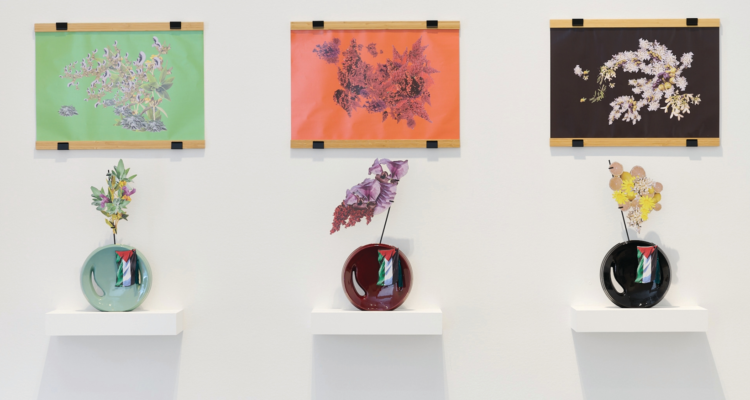Visitors question if artwork featuring Palestinian flag and referencing “contested ancestral land” belongs in a Jewish art museum.
By World Israel News Staff
An exhibit in a modern Jewish art museum that features a Palestinian flag, along with an artist’s statement referring to the “contested ancestral land” of Palestinians, has sparked controversy among the institute’s guests.
The exhibit, which is composed of three circular vases each adorned with a Palestinian flag and flowers, is currently on display at the Contemporary Jewish Museum in San Francisco.
Titled “Nobody is listening to us,” a label near the display says the piece was inspired by a conversation between the artist, Tosha Stimage, and a Palestinian man.
Stimage, who is black and not Jewish, contributed the piece to the museum as part of an exhibit focusing on ‘Tikkun Olam’ – a Kabbalistic concept of healing the world.
“Olive, sage, and sumac are flowering plants native to the Mediterranean (including regions of Gaza and the West Bank) that have a direct relationship to contested ancestral land and affect the livelihood of so many Palestinian farmers and families caught in the conflict,” reads the description on the piece by Stimage, which was obtained by the J. The Jewish News of Northern California.
“They are positioned in the space of The Contemporary Jewish Museum as a metaphor for the ongoing conflict over land rights and the desperate need for restoration and healing of an age-old wound.”
Maury Ostroff, a local visitor to the museum, questioned whether the display belongs in a museum dedicated to Jewish art. “What’s so Jewish about this? What’s so ‘tikkun olam’ about all of this?” he asked.
Stimage declined to speak with the California paper about her artwork.
Reform Rabbi Peretz Wolf-Prusan praised the work.
“I am grateful to the CJM for including ‘No one is listening to us.’ I am trying to listen,” he wrote in an op-ed.
“There are broken pieces everywhere. It takes courage to listen and look for them, recognize them, and then, without guilt, try to make what small repairs we can. It takes courage to show the disturbing artwork that might inspire us to do it.”
There was no piece of art or representation of the other side to the Israeli-Palestinian conflict or of the ancient and modern Jewish history of the Land of Israel, despite the fact that the museum is a Jewish educational institution.





